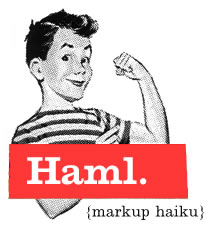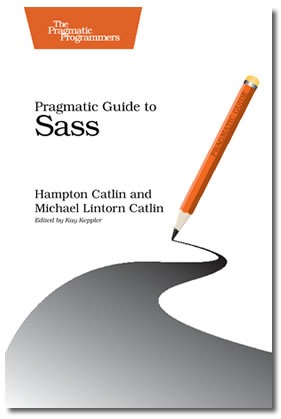Sass, which is said to be short for “Syntactically Awesome Stylesheets”, is a meta-language that extends CSS3 to do things that plain old CSS can’t do easily or at all, with goodies we’ve come to know and love from our programming languages: variables, nesting, mixins and inheritance. It compiles to well-formatted standard CSS, and you can even have Sass watch your Sass files so that it automatically updates your compiled CSS files as you update your Sass source.
Sass is the creation of Hampton Catlin, a “Shopifriend” and programmer who’s all about optimizing his programming tools. When he got fed up with building HTML templates for his Rails projects, he created the Haml markup language. Haml’s popular enough that it’s found its way into the most unlikely of places, such as the .NET world, where they’ve implemented it as NHaml. Just as Haml is Hampton’s optimization of HTML, Sass is his optimization of CSS.
It’s only fitting that Hampton is the co-author of the upcoming Pragmatic Bookshelf book Pragmatic Guide to Sass. Like Hampton, it gets straight to the point; it’s going to be about 100 pages long. He recently tweeted that “doing more than 100 pages just seemed like filler.” Given that I’m already behind in my tech reading, I’m glad that Hampton (and his co-author Michael) insist on keeping things concise.
Pragmatic Guide to Sass is currently in beta. You can get it in ebook format immediately (with downloadable updates as more of the book is finished, including the final, finished ebook) for US$13 or buy the ebook + paper book bundle, where you can get the ebook now and both the paperback edition and the final, finished ebook when the book is complete for US$30.


